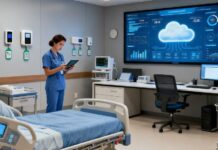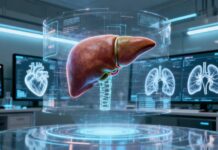Innovation in MedTech Is Encouraged by Digitalization
The pharmaceutical and medical device sectors are emerging from a time of unparalleled adversity and disruption. The sector has been plagued by supply chain issues and increasing complexity at a time when the distribution of novel treatments, gadgets, and medications has made speed and agility essential. Notwithstanding the shortened timescales, risk management and patient privacy and safety protection continue to be of utmost importance.
On the other hand, this disruption has spurred a surge of creativity and inventiveness in the development and manufacturing of drugs and medical equipment. The life sciences sector has benefited from the introduction of digital components, electronics, and software, which have sped up the research of new medications and allowed for the production of smarter, more affordable medical equipment. A change in care delivery is underway, with the home replacing the hospital, thanks to the continuous digitization of healthcare service.
Trends in pharmaceuticals and medical devices in the wake of the pandemic
The pandemic brought to light the high level of inherent risk connected to highly international supply chains, which were already commonplace in many sectors. The epidemic gave priority to shortening development cycles, which were already becoming shorter. Production of different vehicles, equipment, and gadgets was also impeded by disruptions to the semiconductor industry. As computers and electronics become more commonplace, this has an effect on almost every business.
In the meantime, the industry was shown by the quick development of the Covid diagnostic tests and vaccines that quicker timelines could be met within the existing regulatory framework. This led pharmaceutical and device manufacturers to look for more effective ways to manage the complexity of drug and device development in order to shorten development cycles.
Moving from the hospital to the home
In recent years, there has also been some change in the ways that care is delivered. As more people age and need more care, hospital beds are in great demand. The capacity to provide patients with outside-the-hospital assistance and high-quality remote care is becoming more important due to space constraints and rising expenses in conventional hospital and clinical settings.
This calls for the development of medical devices that are more resilient, intelligent, and safe and that may be given to patients to use at home or on the road. In order to guarantee safety, effectiveness, and simplicity of use by inexperienced users, device producers must deal with a greater degree of complexity in the design, engineering, and regulatory clearance of new gadgets. For instance, wearable or implantable smart glucose monitors are now available to assist diabetic individuals control their condition more effectively and lower the need for episodic emergency clinical treatment. The patient may use this information to follow their blood sugar levels and how it reacts to various variables such as stress, exercise, nutrition, and other changes since the smart gadget continually checks blood glucose levels.
The era of care characterized by software
In the future, software will play an ever more crucial role in the delivery of contemporary medicines. In the medical and biological sciences, software is ubiquitous. It is used in the creation, manufacturing, administration, and distribution of medical equipment and pharmaceuticals. There is a growing trend of using software as a medical device in and of itself. Software has made significant strides in medical technology possible by being integrated into so many different processes. This has helped with illness detection and treatment, chronic condition management, and patient data organization and security. However, there are some difficulties with the expanding use of digitalization and software in the medical field.
To guarantee patient safety and effectiveness, all of this software—whether used by a patient or a medical professional—must pass a stringent certification and risk assessment process. This includes upgrades.
Additionally, very sensitive patient data is produced or managed by smart medical devices, software used in medical equipment, and even wellness gadgets like smart watches. Therefore, just as conventional innovation routes for medical goods and treatments need equal focus and investment, manufacturers must employ stringent data security and risk management methods.
Innovation and progress are encouraged by digitalization
The medical sector is embracing digitalization and digital twins because of their potential to enhance fundamental engineering, design, and data management procedures. This becomes more crucial when gadgets become smarter, more sophisticated, and software-defined. Medical devices are particularly well-suited to further the digitalization of design, engineering, testing, and manufacturing since many of them are discrete-manufactured goods made in a similar fashion as automobiles and smartphones, two sectors that are recognized as leaders in digitalization. In order to guarantee dependability and safety, engineers may model and forecast several elements of a new medical device’s functioning, such as heating or power consumption, thanks to its full digital twin. Similarly, digitization is helpful in the creation of durable and extremely accurate surgical robots, which allows surgeons to confidently conduct delicate operations.
Pharmaceutical and medical device firms are at the forefront of digitization because of the potential benefits that digital twins might provide. However, these industries haven’t embraced digitalization at the same rate as others, like the automotive and consumer electronics sectors, because of the need to minimize risks and ensure safety, as well as the strict regulatory criteria that new devices and medications must meet. Given the significance of maintaining patient safety and product quality, makers of pharmaceuticals and medical devices must demonstrate that the potential advantages of a new technology or technique outweigh those of a legacy approach. In light of this, how can engineers and designers anticipate that digitalization and the digital twin will progress in the pharmaceutical and medical device sectors to gain even more traction?
The advancement of digitalization in the provision of novel treatments
In general, further investments in digitalization will provide new avenues for the development of medical devices, implants, and medicines via the use of automation, artificial intelligence (AI), the digital twin, and the industrial metaverse. The use of these technologies will be essential for boosting healthcare systems’ productivity and enhancing remote care delivery. It will be essential to be able to provide quality treatment both in and out of the hospital as hospital space becomes more scarce, particularly for older populations.
Artificial Intelligence is already being used by the pharmaceutical industry to assess drug efficacy and get a better understanding of how the body absorbs various drugs. A novel pharmaceutical product must undergo many testing phases in both clinical and laboratory settings before receiving regulatory clearance. Usually, these studies provide sizable data sets on the dangers, side effects, effectiveness, and patient information about the treatment. Using biomarkers to identify the intricate connections between an individual’s anatomy, genetics, and the chemistry of the medicine being provided, artificial intelligence is being utilized to analyze very massive data sets. Biologists and medical professionals may use artificial intelligence (AI) to identify drug interactions that may not be evident in a single research, leading to the development of safer and more efficient medications by analyzing data from several trials involving various pharmaceuticals.
Looking forward, the industrial metaverse might be used in healthcare delivery to save costs, shorten hospital stays for patients, and enhance condition diagnostics. A standard doctor’s appointment might change to a remote consultation when the doctor looks at a digital twin of a particular anatomy, giving the patient and the doctor a greater understanding of the patient’s condition and available treatments.
Additionally, doctors may be able to tailor a medication or treatment to a patient’s anatomy, genetics, and condition thanks to the work already being done in AI and pharmaceutical research, highlighting health advantages and minimizing negative effects. Frequent wellness visits may also be more successful in identifying illnesses early on, averting protracted and costly hospital admissions, and enhancing patient outcomes.
Pharmaceuticals and medical devices in a digital age
Manufacturers of pharmaceuticals and medical devices are facing a future of increasing complexity, speed, and innovation as they come out of a disruptive and particularly difficult time. Manufacturers of medical equipment are overseeing the creation of more sophisticated, intelligent, and user-friendly gadgets. This puts more pressure on conventional engineering and design techniques. The desire for innovation to happen quickly has increased in the pharmaceutical and device industries, pushing businesses to look for process enhancements that might quicken development cycles without sacrificing data confidentiality, safety, or effectiveness.
In the pharmaceutical and medical device sectors, digitalization and the digital twin are still in their infancy. Nonetheless, producers of pharmaceuticals and medical devices can lay the groundwork for transformative capabilities that will allow them to create new generations of therapeutic drugs and devices by committing to digitalization and utilizing potent technologies like the digital twin, artificial intelligence, and the industrial metaverse. These cutting-edge treatments will help create a more efficient, accessible, and productive healthcare system.














